‘Just putting a bandage on it’: one American classroom’s struggle with daily gun violence
The story was originally published in The Guardian with support from our 2022 Data Fellowship.
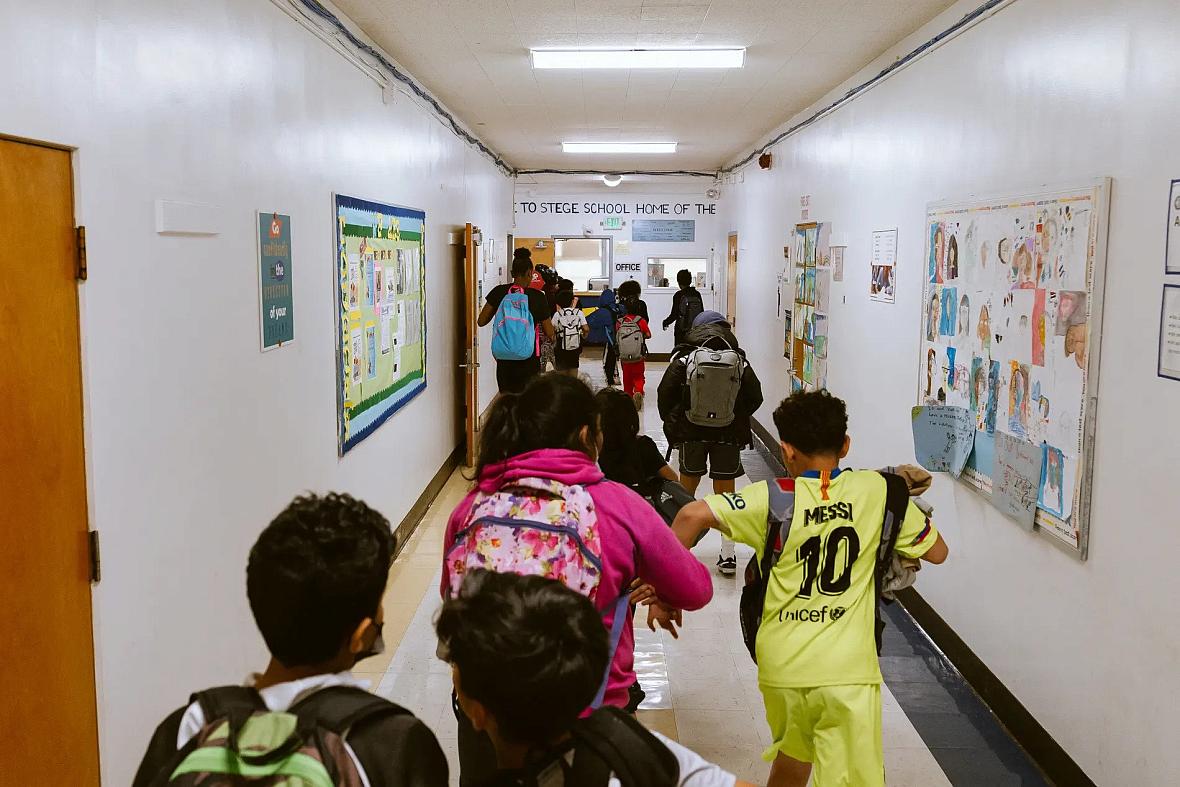
Across the US, Black and Latino youth are more likely than their white peers to have a gun homicide happen near their home each year, according to a recent UC Davis study.
Felix Uribe Jr/The Guardian
It was just before 11am on a Friday and the hallways of Stege elementary school in Richmond, California, were quiet save for the muffled sound of children’s voices coming through the classroom doors.
Behind the heavy doors of Hannah Geitner’s fifth-grade classroom, 26 students were seated at small tables and on a cozy green rug. It was sunny and warm out, but inside, it was impossible to tell; the room’s windows had yellowed over the years.
I was there to talk to the 10- and 11-year-olds about gun violence, a topic I suspected many of them had been personally affected by.
“How many of you have heard a real gunshot by your house?” I asked. Twenty-four arms went up in the air.
“How many of you know someone – a family member or friend – who has been shot?” Eighteen students raised their hands.
For more than six months, I had been researching gun violence near elementary schools in my home town of Richmond. By analyzing police department data, I found that 41% of the 2,300 shots fired in the city over the past decade happened within a half-mile, or about a 10-minute walk, of one of the city’s 33 K-12 public schools. More than 80% of the shootings that took place near schools occurred within a half-mile of an elementary school. Stege elementary has seen an average of six shootings nearby each year since the beginning of 2013.
Some of those shootings were homicides, some were armed robberies, some happened during the school day and some outside of it. The campuses with the most incidents nearby were those in neighborhoods with lower median incomes than the rest of the city, census data showed. This means that for the past decade, thousands of Richmond kids, many of whom are Black and Latino, were exposed to a violent incident before they turned 13.

Guardian graphic.
Richmond Police Department, West Contra Costa Unified School District, West Contra Costa Charter Schools.
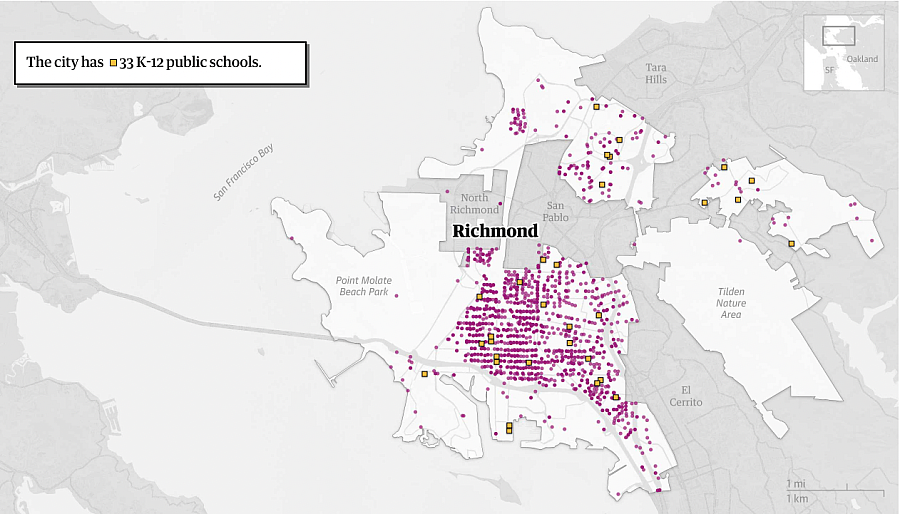
Guardian graphic.
Richmond Police Department, West Contra Costa Unified School District, West Contra Costa Charter Schools.
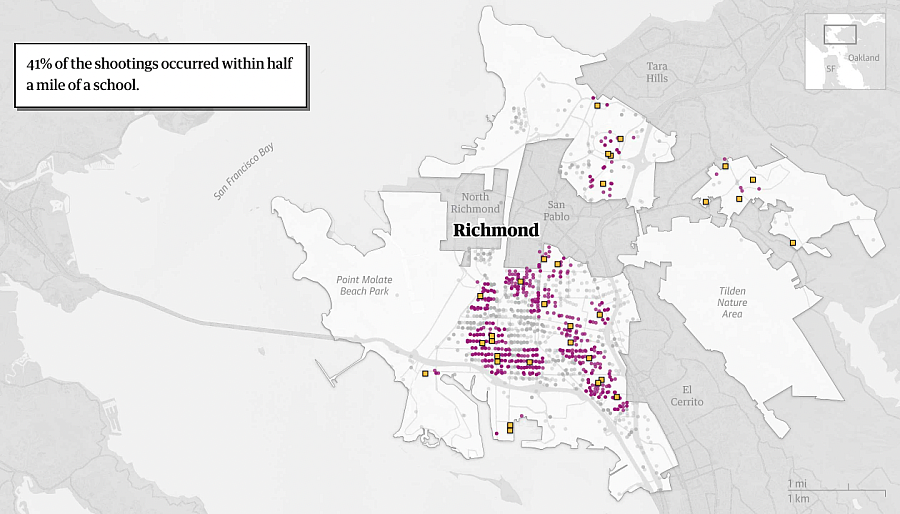
Guardian graphic.
Richmond Police Department, West Contra Costa Unified School District, West Contra Costa Charter Schools.
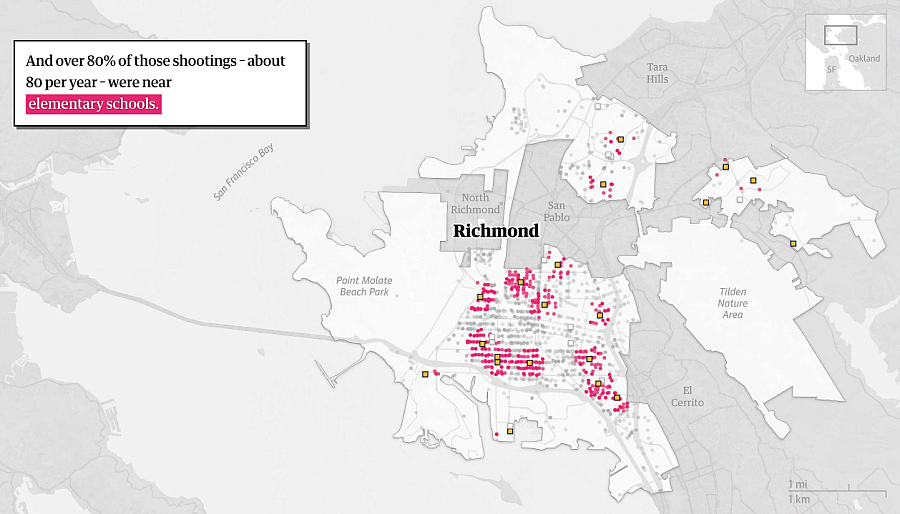
Guardian graphic.
Richmond Police Department, West Contra Costa Unified School District, West Contra Costa Charter Schools.
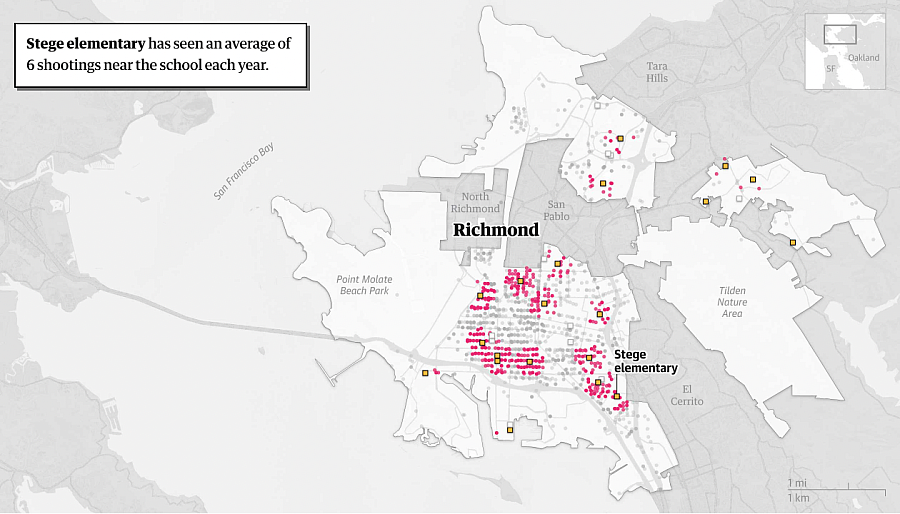
Guardian graphic.
Richmond Police Department, West Contra Costa Unified School District, West Contra Costa Charter Schools.
Chronic exposure to gun violence like what some young kids in Richmond face can create a “war-zone” mentality among affected youth, James Garbarino, a psychology professor at Loyola University Chicago who specializes in child and adolescent development, argues in a 2022 New England Journal of Medicine article, resulting in a worldview in which community violence is normal.
Yet few American school districts, including Richmond’s, have consistent programming for K-12 students to help them navigate the emotions, stress and anxiety that come with being exposed to day-to-day gun violence. Most efforts in schools are centered on mass shootings, and the few initiatives focused on community gun violence that do exist are tailored towards high-schoolers.
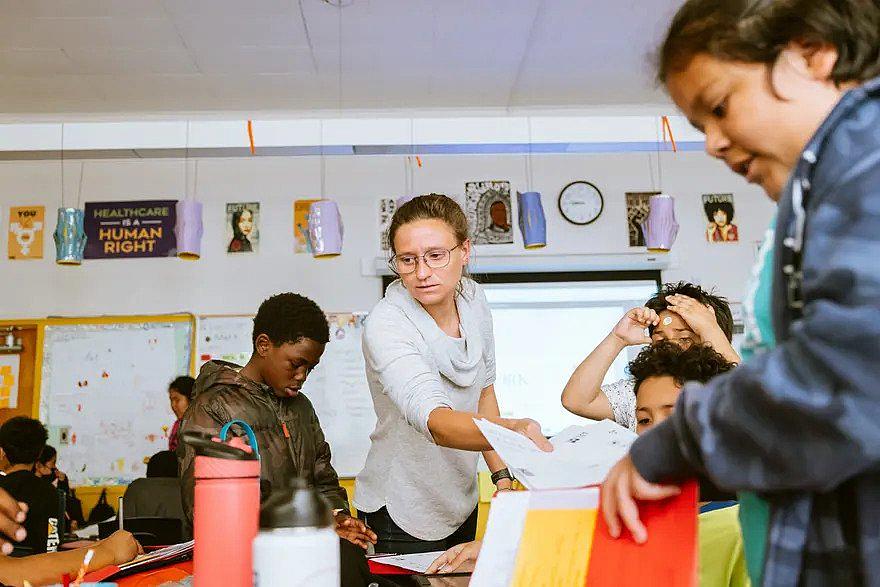
Hannah Geitner distributes assignments to her class at Stege elementary school in Richmond, California
When I asked Geitner’s fifth-graders how many had had someone at school – other than Geitner herself – talk to them about guns and violence, some of the kids raised their hands and began pointing to their peers.
But when I clarified that I meant teachers and school staff, all of the hands came down.
After the class conversation, Geitner said she believed all of the children in her class had been exposed to gun violence, either near campus or near their homes.
Several of the children who didn’t raise their hands at the beginning of my visit, I later realized, were still learning English. Three of them, two from Nicaragua and one from El Salvador, told me through another student that they had all heard gunfire when living in Central America. One of the students from Nicaragua said that he’d also heard gunshots since being in the US, and had been upset after gunfire had interrupted his sleep.
“I would love to know the right thing to say to a fifth-grader who saw a shooting last night,” said Geitner. “You drive around and there are memorials all over the place. I have kids who come with the lanyards, T-shirts and buttons of loved ones [who’ve been killed]. It’s wild to think about how much violence and death they’ve all known.”
A city grappling with violence
Located about 18 miles north of San Francisco, Richmond is known for its struggles with gun violence and the programs that have become nationally renowned for fighting it.
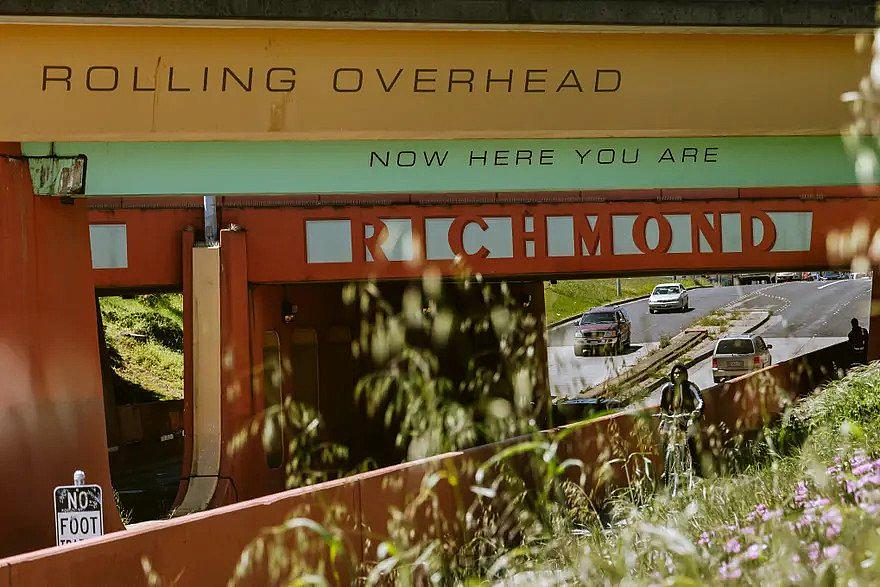
A cyclist on a bike path in Richmond. The city is known for programs fighting gun violence.
The city’s Black population boomed during the second world war, when its shipyards built many of the US’s warships and attracted people from southern states. But in the decades after, it was hit hard by economic challenges, housing segregation, and the crack epidemic. Now, it’s a city where low-income Black and Latino residents are less likely to have access to healthy foods and more likely to live in neighborhoods affected by pollution caused by hazardous waste sites and factory emissions.
Richmond also developed a reputation as one of the most dangerous in the US: with fewer than 100,000 residents, homicides reached a high of 61 in 1991. The rate fluctuated when I was growing up there in the early 2000s and 2010s, reaching a low in 2001 and a decade high in 2007, when 47 people were killed. Over the next several years, a number of pioneering community programs were founded that helped lead to a dramatic reduction in homicides over the next decade. But though lower than in years before, gun violence has not been eliminated. Eighteen people were killed in 2021 and 2022, the majority of them with guns.
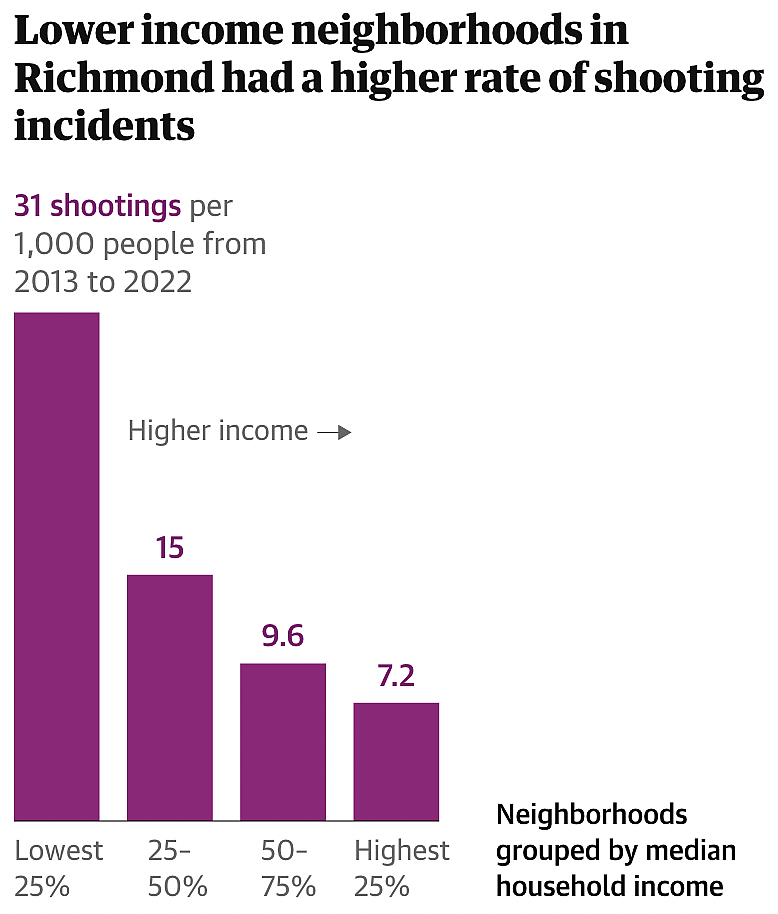
Guardian graphic.
Sources: US Census Bureau’s 2021 American Community Survey, Richmond Police Department. Note: Analysis of Richmond’s Census block groups.
Geitner, an energetic, raspy-voiced millennial with dark blond hair, moved to Richmond from a small town near Syracuse, New York, to work at Stege through Teach for America, a national non-profit that sends young educators to the US’s most underserved schools. She arrived in California hardly knowing anyone. The school quickly became her home, and the kids and their caregivers her family. When she finished the program, she took a permanent job at Stege as a special education teacher, helping kids in all grades with math and reading. Last year, she taught fourth grade, and in the 2022 school year she began teaching fifth-graders.
Geitner recalled a day last year when one of her fourth-grade students wasn’t acting like himself. “He talks a lot, is super outgoing, loves to tell you everything about everything. He takes his education so seriously, but something was off and I saw him outside at recess and he wasn’t playing.”
She asked the boy if he wanted to talk, and at first he hesitated, but once the other kids left the classroom he stayed back. Eventually, he opened up: the night before, he and his older brother – a high school senior at the time – had been robbed at gunpoint after buying snacks from a mini-mart near their home. The assailant had made them empty their backpacks.
“He was in fourth grade so he only had paper in his bag, and they gave them all the money and he had no idea how to process it,” Geitner recalled.
The next day, the boy brought a BB gun to school. “He got nervous and put it in his younger cousin’s backpack before school started, so there was a first-grader with a gun in the backpack. Eventually it came out that it was him who brought it.”
When Geitner later asked the boy why he had brought the BB gun, he said that he no longer felt safe.
The struggle to learn
The incident made clear the emotional ramifications of gun violence. Often, though, the clues are more subtle, several Stege teachers said.
“If something happened in the neighborhood, students come to school upset. Even a pencil breaking sets them off,” said Sonia Perez, a first-grade teacher and Richmond native. “And sometimes their responses, because they’re coming with trauma, are preventing them from learning because their minds are somewhere else.”
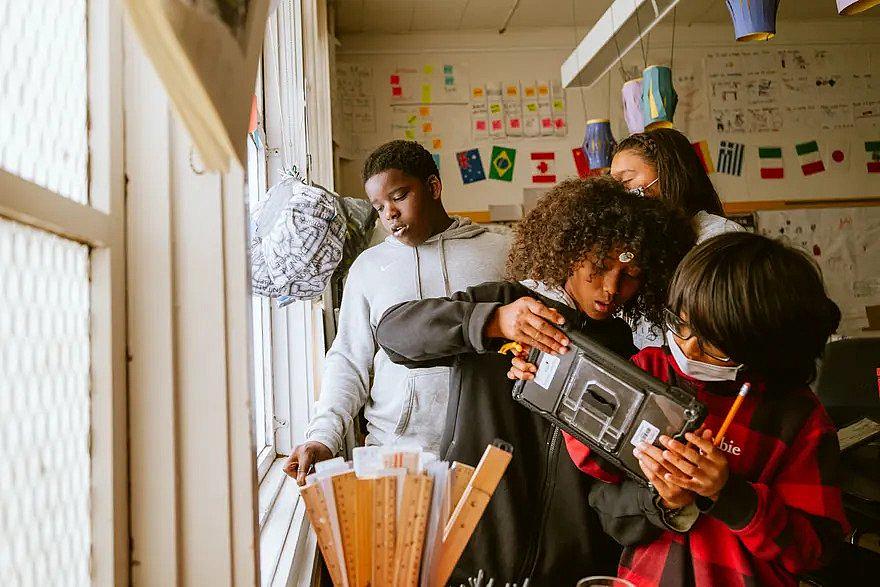
Fifth-grade students work on an assignment
Michaela, a student in Geitner’s fifth-grade class, said she often thought about gun violence. She’s heard gunshots in each apartment complex she’s lived in, and several of her cousins and uncles have been shot or killed. These memories, and fears such shootings may happen again, could make her “extra sensitive” at times, she said, and in those moments, she didn’t want to participate in class or be talked to or touched.
“In my head I be knowing that I’m wrong, so I be feeling bad, but at the same time I’m mad. I be saying to myself that I want to give up on school because it feels like it’s too much to do. Sometimes I wanna hit somebody or throw something.”
Before Geitner became her teacher, Michaela would ready herself on these “extra sensitive” days to be sent to the principal’s office or for the teacher to call her mom. Instead, Michaela said, Geitner lets students go for a walk or run outside or have a moment to themselves. They can even nap if they need to.
“All behavior is a form of communication, Geinter said. “If Michaela comes in and is a little grumpy, I know she’s not mad at me so it has to be something else. I don’t think disciplining her is going to solve the problem. If you’re grumpy, or you can’t sleep, or you have hard feelings, you can’t learn.”
Perez, the first-grade teacher, said she also offered the students strategies. “We have a break spot – they have noise cancellation headphones and a sound machine that relaxes them.” But those techniques weren’t getting at the deeper issues they face. “We’re just putting a bandage on it for that moment and we’re not actually targeting how they feel.”
The impacts of exposure
Across the US, Black youth are nine times more likely than their white peers to have a gun homicide happen near their home each year, according to a June 2022 study by the University of California, Davis. Latino youth are seven times more likely to have this experience than white children.
It’s a disparity that can be seen in Richmond. Less than a half-mile away from Stege is the border of El Cerrito, a middle-class, majority white and Asian city. Yet residents of El Cerrito face far less gun violence: between 2018, the earliest year for which police have full crime data, and 2022 there were 107 shootings, two of which were homicides. In the same span in Richmond, there were 1,137 shootings, more than 90 of which were homicides.
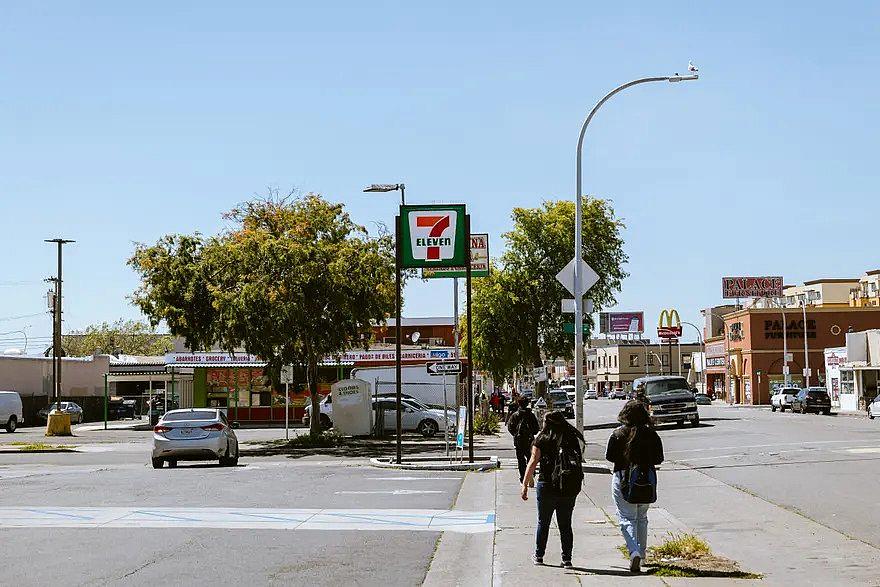
Students walk home from school. Police data reveals 41% of shots fired in the city between 2013 and 2020 occurred in close proximity to public schools.
Nicole Kravitz-Wirtz, the assistant professor at UC Davis’s violence prevention research program who led the study, said repeated exposure to gun violence could lead to persistent fear and depression, feelings that can lead kids to detach from their schools and local communities and carry weapons to feel protected.
Kravitz-Wirtz is part of a growing chorus of researchers imploring their peers to broaden their ideas about gun violence exposure. It’s not just about seeing or hearing gunshots, she said, but also about bearing witness to the ways that day-to-day gun violence changes communities.
Seeing a vigil near campus, seeing their parents become hesitant to let them play outside or having a police officer suddenly sitting outside their campus is a type of exposure that affects more students than the sound of gunfire does, Kravitz-Wirtz said.
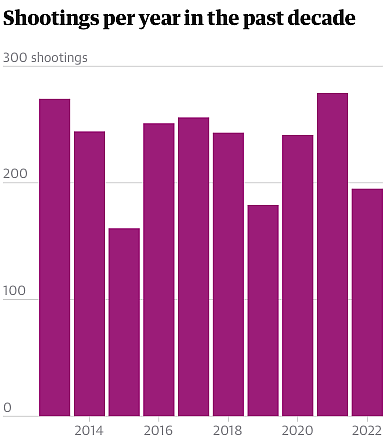
Guardian graphic.
Richmond Police Department.
“We like to emphasize that the experiences [with gun violence] that people have directly are just the tip of the iceberg and that’s most visible,” Kravitz-Wirtz said. “But in terms of impacting a larger number of kids, it’s the secondary layer of exposure that [is] more far-reaching.”
While schools are typically quick to arrange mental health services and interventions following a mass shooting, many kids who are chronically exposed to community gun violence struggle to access such services, according to Garbarino, the Loyola professor. And yet, he told the Guardian, intervention during elementary school could go a long way. “Elementary school is a time when [children] are vulnerable and they are also malleable to prevention. It’s a context that’s ripe for intervention and preventive programs,” he said.
Districts’ lack of sustained programming in elementary schools was not due to a lack of available information, but rather was a failure by government officials and school leadership across the US, said Dr David Schonfeld, director of the National Center for School Crisis and Bereavement at Children’s Hospital in Los Angeles.
“It’s not that people are ignorant, it’s that they choose other decisions,” Schonfeld said.
While conversations about trauma and gun violence had become more common, action was still lagging, he said. “The bottom line is that kids are aware of what’s going on, even if they’re in elementary school. When we don’t talk to children about these things, we don’t help them cope with it.”
‘We need full-time counseling’
Left to fill the gap left by the lack of school programming at elementary schools are community programs, local advocates and individual teachers and school administrators.
Stege has two psychologists who come on campus twice a week, and the West Contra Costa Unified school district (WCCUSD), which Stege is a part of, has a partnership with an outside mental health organization.
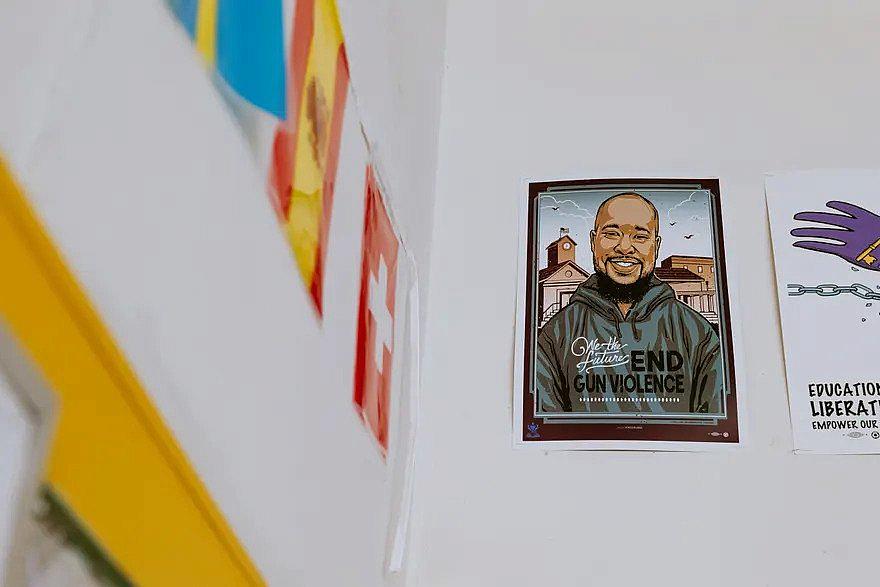
The ‘full-service school district’ is intended to be a hub for education, family engagement and mental and behavioral health services.
The district is considered a “full-service schools district”, where K-12 schools are meant to be hubs for education, family engagement and mental and behavioral health services. The state of California has dedicated more than $3bn in funding for other campuses to follow this model. In 2022, the district received $30m of that money to be spread across 22 campuses, including Stege.
“We know that a shooting near a school is going to impact students’ success academically and socially, but there are ways that we can offset that,” Tony Thurmond, California’s state superintendent of public instruction, told the Guardian. “Even with training, these are difficult things and we have to work to find ways to help children express, be supported and address the fears that they hold.”
Still, teachers at Stege are struggling. They want to see more coordination between local police, the district and Stege staff, so they can be better informed about shootings happening outside of school and be able to look out for signs of trauma.
Rashelle Rew, a fourth-grade teacher in her third year at Stege, recalled two shootings last year at the park across from campus during an after-school program. Students heard the gunshots and were brought into the cafeteria to shelter in place. Since the shootings didn’t happen on school grounds or during official school hours, the district never sent a notice to other staff or families, and it is unclear if district leadership knew about the incident.

Children play at the park across the street from Stege school on a recent afternoon.
Teachers also said they needed more training in what to say to children who have been affected by gun violence. “I’ve had a student come and say his dad threatened to kill his mom. I don’t know if we as teachers always know what to do with that,” said Josh Miller, a 28-year-old second-grade teacher who recently moved to Richmond from Kansas with his wife, who is also a teacher at Stege. “I just try to get a straight answer, try to get the general story and then make sure the child is safe. It would be great to have had training on how to walk kids through that.”
And, some teachers said, the district should work harder to gain the trust of parents. “A lot of our parents went through this district and got fucked over, and I don’t think that’s been acknowledged,” said Geitner. “How can we start repairing these relationships?”
School board trustees emphasized that homicide rates in the city had decreased dramatically in the past 15 years and that the district contracted with non-profits to bring arts and wellness programming to students.
They also pointed at funding shortages, noting the district had gone in and out of solvency in recent years, leading to staffing and program cuts. This school year, the district had a $27m deficit, contributing to high instructor and administrator turnover.
“The resources need to be there all the time,” said Leslie Reckler, a district board trustee who represents schools in both Richmond and El Cerrito. “We need full-time counseling and we are still short of the resources to provide that.”
Reckler and other board trustees said there was some work being done on high school campuses, but that they were not aware of any programs geared at elementary-aged children.
The district does offer annual active shooter trainings, but those sessions are meant to ready teachers for the possibility of an on-campus incident.

‘They can’t focus on learning until we focus on the trauma,’ said the district superintendent, Dr Kenneth Hurst.
“We can do more,” admitted Gayle McLaughlin, a Richmond city councilor and former mayor whose district includes Stege. She said she couldn’t recall having any conversations with education officials about gun violence exposure near elementary schools, but she hoped to have a meeting this fall between district and city leadership about how they could be better coordinated. Nothing was scheduled yet, McLaughlin said.
Dr Kenneth Hurst, the district superintendent, described WCCUSD as a “tough district” where academics have suffered for years and financial solvency has been elusive.
But he’s hopeful that the recent infusion of millions in state grant funding will alleviate that strain so administrators can create and sustain programming to help elementary school kids cope with their trauma.
“They can’t focus on on the learning until we focus on the trauma. That’s what we are trying to do with the community schools,” said Hurst, who has been with the district for two years.
Working towards solutions
Richmond is a unique place to think about solutions to gun violence. For the last four years as a reporter covering gun violence, I’ve been writing about the city’s long and successful history of community organizing. I’ve seen organizations go from local groups to national models in gun violence prevention, honored at the White House and by members of Congress.
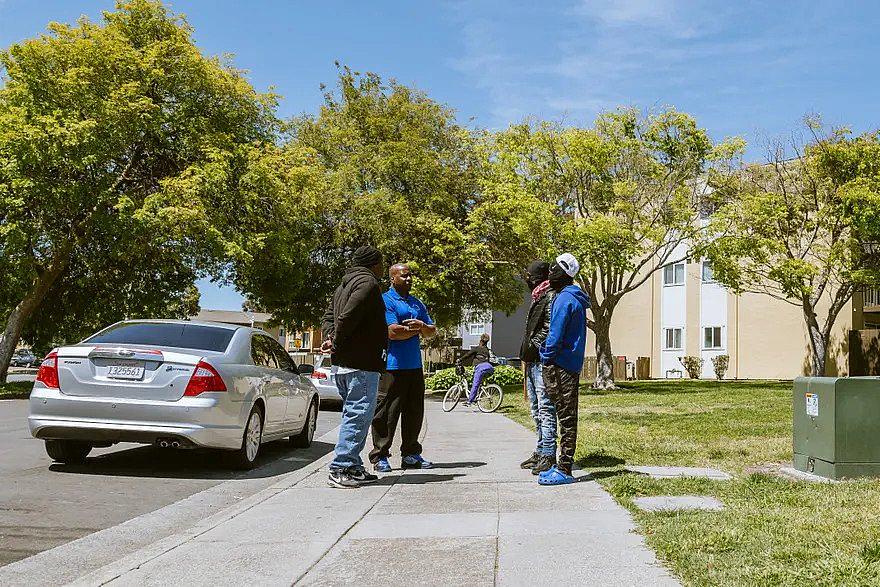
Agents with Advance Peace meet with young men they are mentoring in Richmond.
In 2016, the Richmond native DeVone Boggan founded the intensive violence intervention program Advance Peace, which deploys services and mentorship to the small number of people involved in most of the city’s violence.
Boggan has come to see that traumatic childhood experiences often shape the lives of people who later become perpetrators of gun violence: “A big part of our work is helping them heal from all of this shit that they’re still negotiating because no one has ever sat with them, talked with them and listened to what’s really going on in their mind,” he said.
Elementary schools, he said, could and should be a crucial point of intervention to divert kids from interpersonal conflicts that can turn deadly. “Why wait until they’re a shooter to provide them with mentoring multiple times a day?”
Advance Peace has since become a national model, replicated in cities across the country. It was recently tapped by high schools in Richmond to work with students who are involved in neighborhood conflicts. And the city’s office of neighborhood safety (ONS), which Boggan used to direct, is working with the district to provide on-campus support to middle and high schools. But, Boggan said, schools were often hesitant to work with violence interrupters, many of whom were previously incarcerated for committing violence themselves.
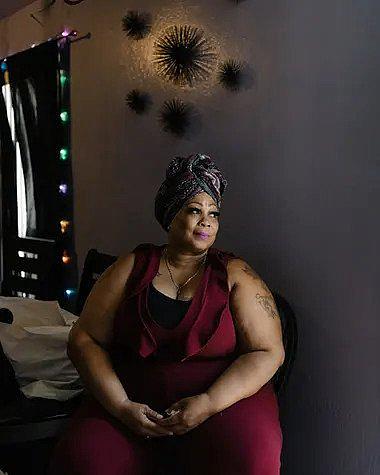
Elana Bolds, a longtime Richmond gun violence prevention worker.
Jason Henry/The Guardian
“That’s the community expertise you’ve got to be able to tap into. And often the only expertise comes from the trenches.”
Sam Vaughn, who currently leads ONS, echoed Boggan’s view: “Every time something firearm-related happens at the school, they call on us and it’s an emergency. But what about some prevention?”
Elana Bolds is another longtime Richmond gun violence prevention worker and has loved on generations of Stege students. She runs an active shooter drill for young kids that teaches them how to respond when a neighborhood shooting breaks out in their community.
“The babies, especially the Black boys, had so much anger,” she said. “They may have had a brother or father be shot and ask, ‘What point is there to be a good student if I’m at school and no one’s talking about it?’”
Bolds has recently taken a new job with the district overseeing after-school programs, which she hopes will help her bring inspiring stories about Black and Latino activists and creators to students.
Geitner too believes that success will come from grassroots initiatives like these. “The people at the top, they’re really out of touch with what kids are experiencing,” she said.
Geitner now has six godchildren in the community. In the four years she’s been in Richmond, she has gone to students’ homes for dinner, taken them to play at their basketball tournaments and made it a point to meet community leaders like Bolds.
As her fifth-graders prepared for summer, several said they would like her to be their teacher next year as well. For many of the students, it seems, Geitner has become an ally and source of acceptance they hadn’t experienced in school before.
“Ms Hannah doesn’t let anybody give up,” Michaela told me.
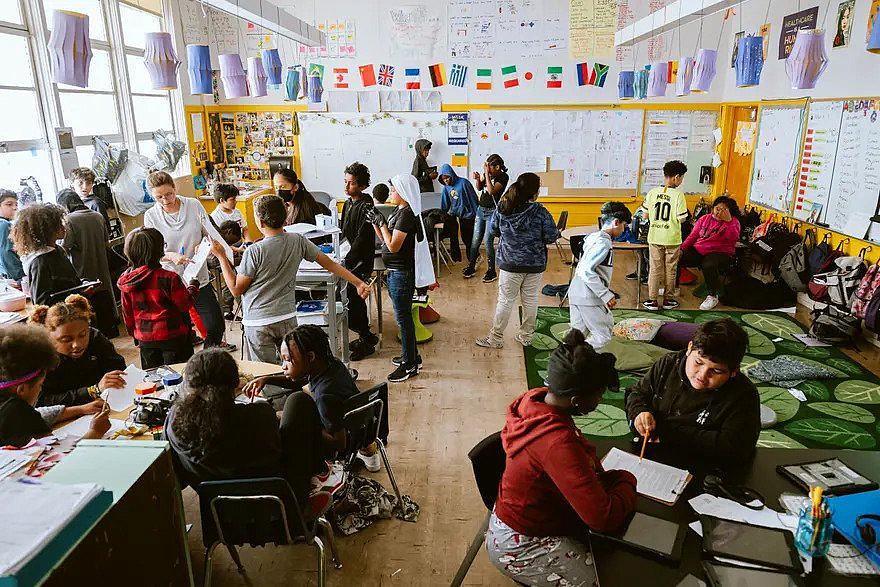
Hannah Geitner’s class.
Felix Uribe Jr/The Guardian

